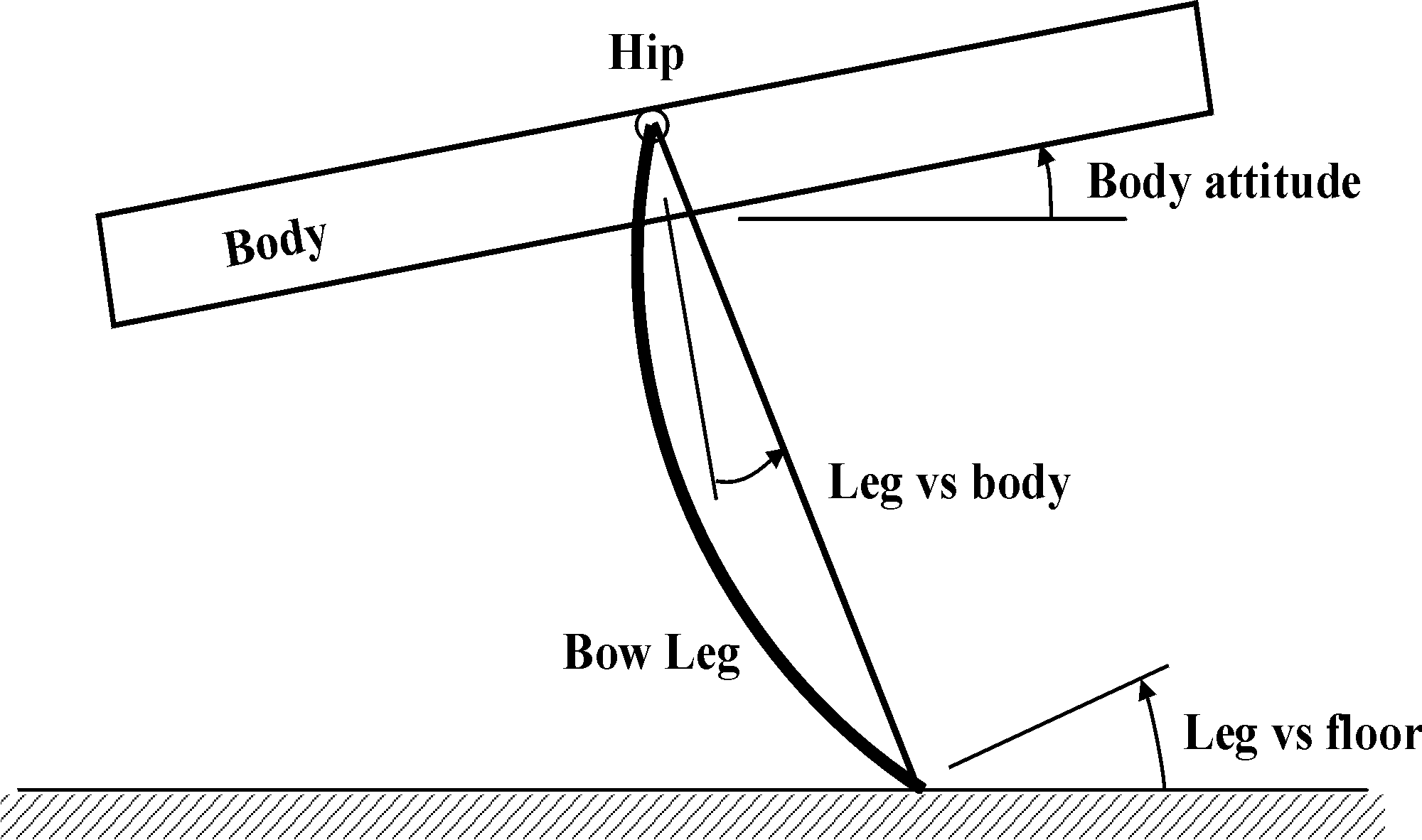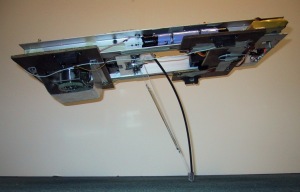This diploma project is about a simple control of a robot that has a single leg so hopping is the only gait it can use. The characteristics of this machine are:
- The leg is bow-shaped and works like a spring that can be compressed between one step and the next in order to add energy.
- The body attitude is passively stabilized during stance by the low placement of the center of gravity.
- Onboard batteries electrically power all the actuators. No wire to outboard devices is required.
This 3D machine is a result and a generalization of an in-depth study of a preliminary planar prototype: the 2D Bow Leg Hopper. The motion of this early robot was restricted to the plane. A tether mechanism constrained the machine to move with just three degrees of freedom. Actually, the robot moved on the surface of a large sphere centered at the tether pivot. This planar monopod hopper demonstrated the efficiency of this new type of running robot.
The hip joint of these machines is attached to the body slightly above the center of mass. Thus, simply decoupling the leg and the body during floor contact passively stabilizes the body, which is subjected to natural pendulum forces. As a result, the body will swing fore and aft during hopping.
From a control point of view, it is necessary to know the body attitude because the controlled leg angle is specified in the body frame but the useful angle is the one between the leg and the floor at touchdown.

Although it was quite straightforward to measure the body angle with the planar prototype (a potentiometer was simply mounted between the boom and the robot), recovering the body attitude of the 3D machine is trickier. Thus an important part of this project is about sensing.
Four optical range finders have been mounted below the body. A filter
is implemented on the fast onboard 8-bit microcontroller that processes
the asynchronous signals from the four distance sensors in order to compute
the roll and pitch angles.
When moving from two to three dimensions, another complication appears.
On the 2D prototype, the hip joint was simply a hinge. With the 3D machine,
it becomes a gimbal-type hip thus complicating the mechanics and the control.
The scope of this project is the first step in the direction of the total 3D freedom: testing the hardware, designing and assessing the sensing system. To reach these objectives, a simple controller has been developed that tries to keep the leg vertical with respect to the floor. A human operator can add - through a radio command - a small offset to the control output in order to compensate for the errors or disturbances. First results are the product of experiments conducted with the 3D Hopper in a reduced-gravity configuration.
Keywords: legged locomotion, one-legged robot, dynamic hopping control, sensing body attitude
